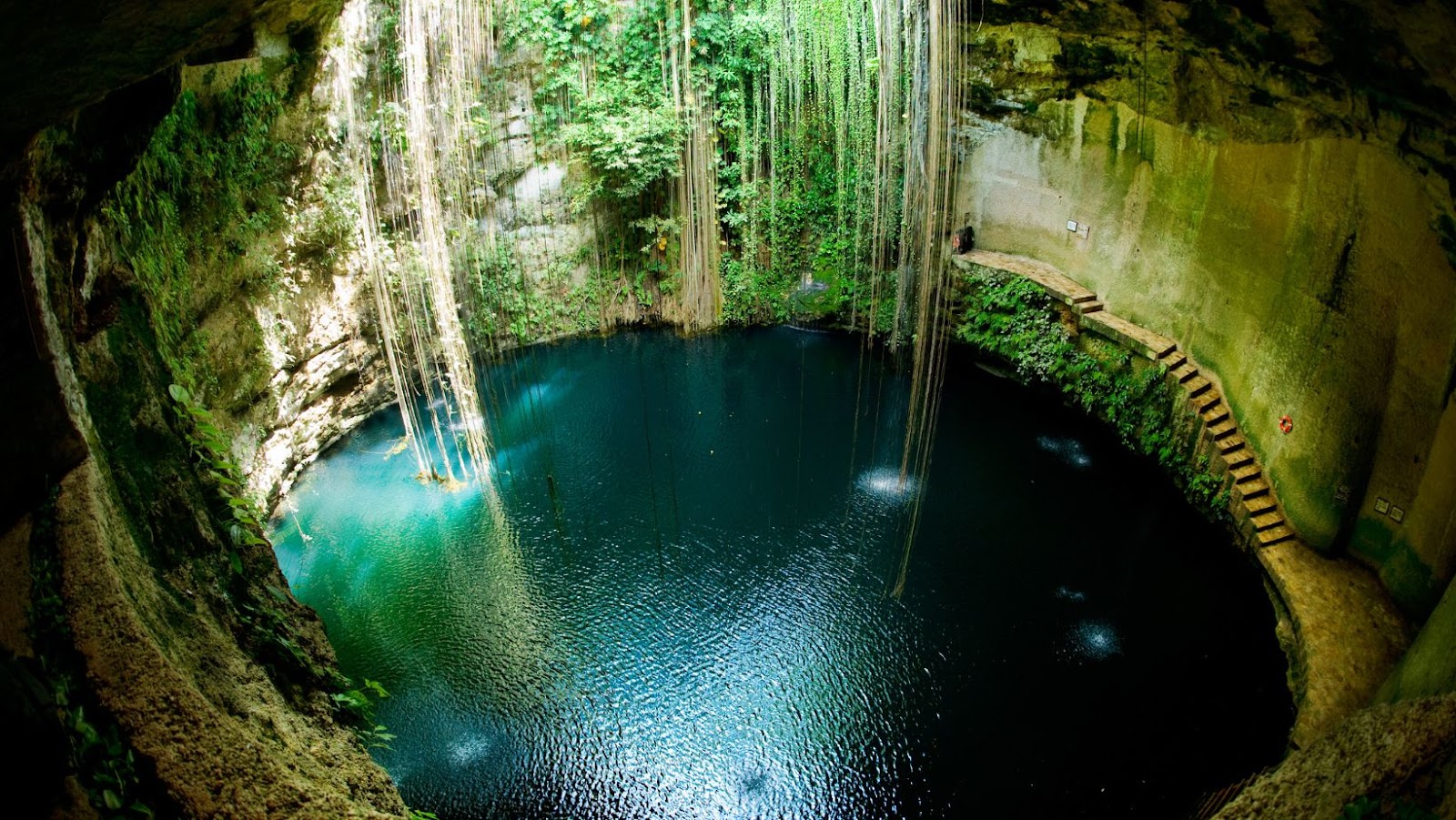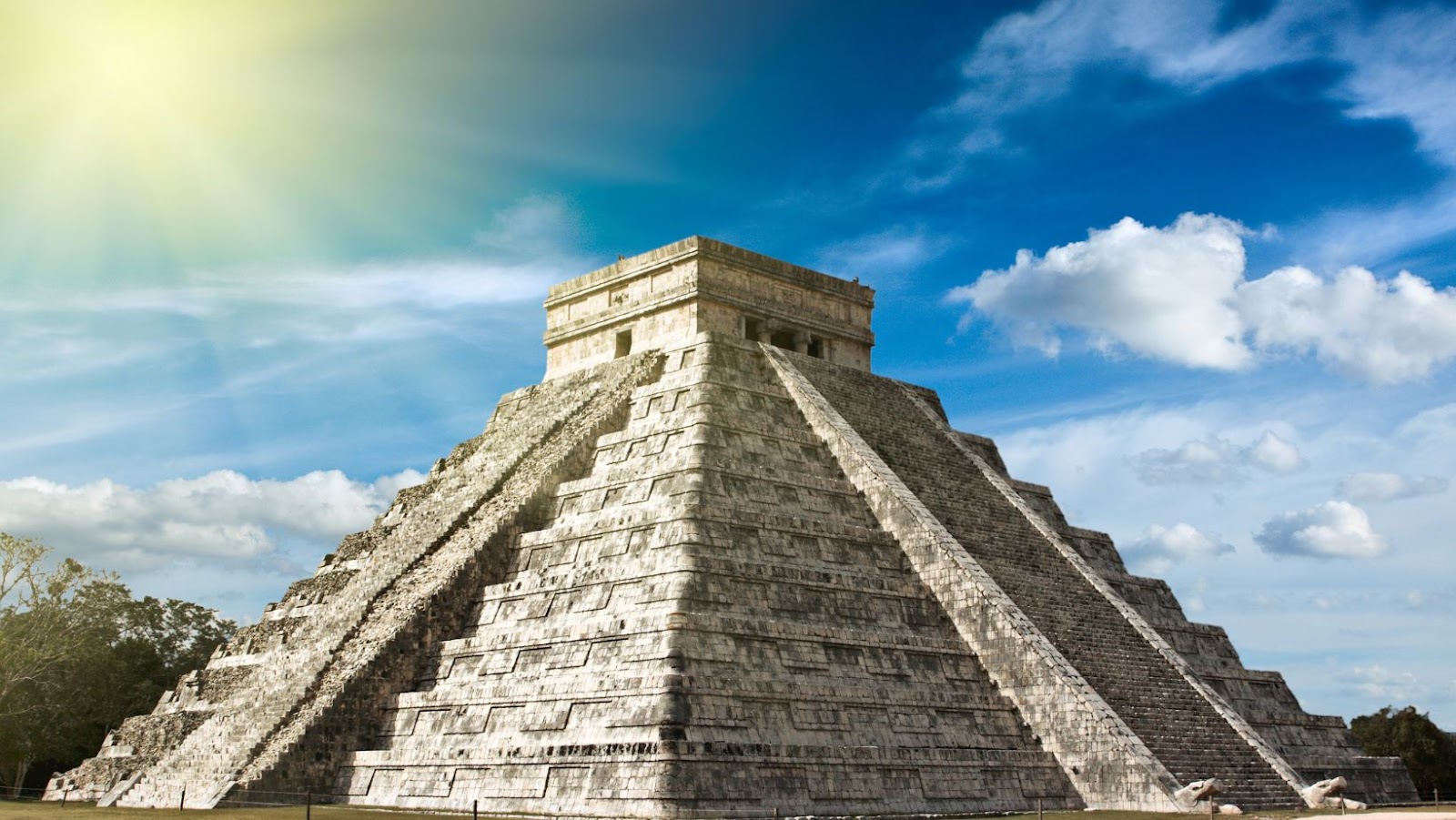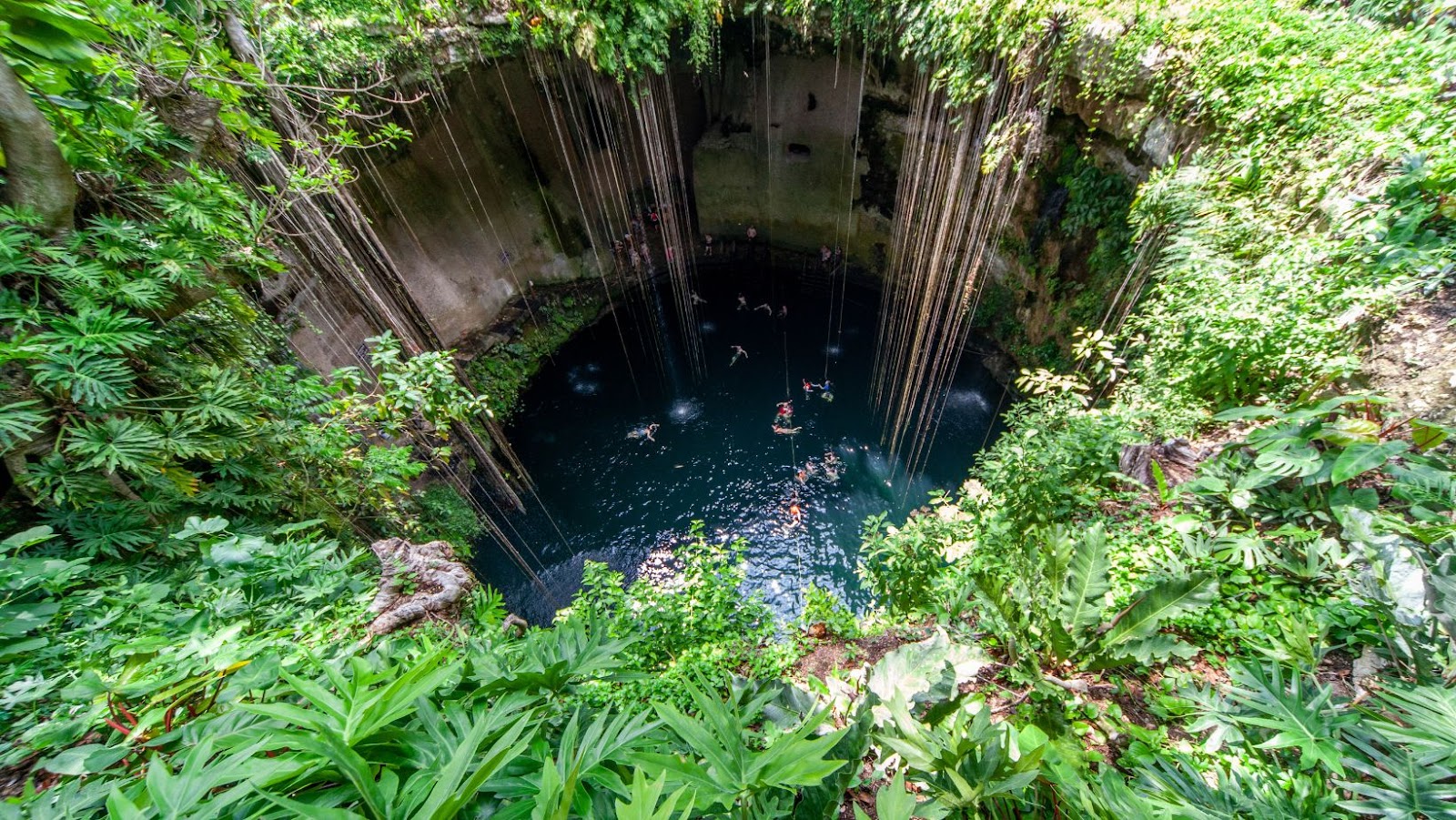
Introduction
Chichen Itza, a pre-Columbian Maya city located in the Yucatan Peninsula, is a renowned archaeological site in Mexico. It is home to the famous Temple of Kukulcan, also known as El Castillo, a pyramid built to honor the Maya god Kukulcan.
The renowned temple stands out not only because of its cultural significance but also its impressive architecture. This article will be an introduction to the Temple of Kukulcan, its history and its features.
Location of Chichen Itza
Chichen Itza, also known as “The Temple of Kukulcan” is a world-renowned archaeological site located at the jungle-filled peninsula of Yucatan in Mexico. Chichen Itza served as an important regional center during the height of the Mayan civilization during the 9th to 11th centuries and well into the 15th century before it was eventually abandoned. During this time of prosper, the city was an integral part of a larger trade network among other cities in Central America, and its powerful legacy influences Mexican culture to this day.
The main attraction that draws thousands of tourists each day are the grand pyramids and temples scattered around Chichen Itza. Each pyramid has its own intricate carving that tells stories about gods, war heroes, and ancient rituals. The most famous temple is El Castillo (or Temple of Kukulcan), which stands 19 meters high and consists in a symmetrical staircase with 91 steps on each side – signifying 91 days or movement through one year – leading up to a platform where shrines were built to worship Nohoch Mul (“Great Walkers”) deity figures. On spring or autumn equinoxes these stairs create shadows along their edges making it look like serpents coming down into the earth – an occurrence that left many people spellbound as they tried to understand what miracle just took place before them.

History of the Temple of Kukulcan
The Temple of Kukulcan, also known as El Castillo, is one of the most well-known and impressive Mesoamerican sites in the world. It is located in the archaeological zone of Chichen Itza in Mexico’s Yucatán Peninsula, and was at its zenith between 750-1200 CE during the pre-Hispanic Mayan period. Dedicated to the Feathered Serpent deity (Kukulcan), it was a complex temple that housed a large religious gathering place and served as an observatory for astrological purposes. Its stepped structure is layered into nine platforms and four sides adorned with feathered serpent designs which are believed to represent fertility and growth.
The temple is highly associated with astronomical aspects, as there are clear connections between its architectural design, astronomical phenomena such as solstices and equinoxes, and agricultural cycles. Furthermore, its construction is accurately aligned with cardinal directions to a degree that warrants admiration for its builders.
In addition to being an important spiritual place for pre-Columbian Maya culture, the Temple of Kukulcan provided insight into the development of local society over time through the various artifacts excavated from the site. Through continuous excavation since the 1920s, scholars have been able to recreate an understanding of how Maya culture overlapped with later cultures coming into contact with them in this region—the Toltecs in particular—and provide many insights into modern Mayan practices that remain today.
Architecture
The Temple of Kukulkan at Chichen Itza can be found on the Yucatán Peninsula of Mexico. This majestic temple is a step pyramid and is a part of a larger complex of Mayan ruins including an observatory and many other buildings. Built in the mid 9th century, the Temple of Kukulcan is an incredible example of Mayan engineering and architecture. Its unique features and iconic design have made it a popular tourist destination.
Let’s take a closer look at the architecture of this amazing site:
Description of the Temple
The Temple of Kukulcan is a Mesoamerican pyramid located in Chichen Itza, Mexico—an ancient Mayan city and cultural center during the height of the Mayan civilization. This monumental temple stands 98 feet tall and consists of a stepped pyramid adorned with symbolic carvings known as chacmools—monsters featuring the upper body of a seated man and the lower body of a jaguar. The temple rests atop several platforms, symbolizing its connection to both nature and the universe.
At this temple, the four sides have 91 steps which are then each divided into 18 sections, creating a combined total of 364 steps. Each corner faces one of four cardinal directions; this orientation aligns with astronomical phenomena as well as relating to agricultural cycles like that of planting seasons and harvests. This alignment also has spiritual significance for local cultures, with such structures serving to honor their gods and culture’s spirit.
On either side of the staircase is an array of intricate carvings depicting deity figures together with scenes depicting wars or ceremonies. As one reaches near the top, two large statues are found near two alcoves at each side: one depicting Itzamna who was believed to be an antique Olmec god adopted by later cultures; and opposite it is Kukulkan (hence its name), touted as being an incarnation about God himself for local devotees.
The Temple includes various sacrificial chambers used for various rituals throughout its history, including ones used in traditional worship practices conducted by locals up until today. Climbing to its peak at equinoxes each year attracts hundreds or thousands of tourists or pilgrims who attend ceremonies conducted by priests or shamanic elders at this location due its symbolically spiritual importance in Mayan lore and region’s culture. Rich carvings depicting gods—such as one resembling a plumed headdress associated with rulership—abound on partitions while presenting stories that serve to narrate complex cosmologies underlying messages portrayed through art here inside the temple complex walls among slopes outside them too.

Significance of the Temple
The Temple of Kukulcan is a Mesoamerican step-pyramid located at the ancient Maya city of Chichen Itza in Mexico. The site, which was a major center of political, economic and religious life in the late Classic era (AD 600–1000), remains one of the most visited archaeological sites in Mexico. Since its discovery in the 19th century, the temple has been one of the most studied and celebrated monuments in Central America.
Built during the Terminal Classic period (900–1200), Platform 29 at El Castillo is substantial in size, measuring 55-meters wide and approximately 30 meters high. This step-pyramid served both as a temple for worshiping Kukulkan – a feathered serpent deity – but also as an astronomical observatory for tracking days, years, seasons and eclipses. Drawing from indigenous knowledge as well as influences from cultures within Mesoamerica such as Teotihuacan and other Classic Sites, this construction allowed for precise calculations on astronomical events and exemplifies how astronomy was used to verify cosmology beliefs among those inhabiting Yucatán during that period.
The rectangular platform that sits atop El Castillo incorporates 365 steps along 4 staircases converging to represent each day in a year. There are 92 stone pilasters along its sides – 52 on every side plus 4 additional ones leading up to the main portion of Templo de Kukulcan each representing 52 weeks apart making it into one solar cycle year lasting 18,980 days which is 52 x 360 – more than four solar years.
This spectacular archaeological legacy contributes vastly to our understanding of Maya Cosmovision combining cultural practice with astronomical observation through their need to more accurately chronicle timeframes such as agricultural cycles or prophecy and ceremony calendaring. It serves as an iconic setpiece reminder symbolizing spiritual power that still binds ancient practices with modern ones reflecting an incredible accomplishment by this pre-Columbian civilization that would resonate throughout history to become part of today’s culture in Yucatán Peninsula.
Cultural Significance
The Temple of Kukulcan, or El Castillo as it is commonly known, is a majestic pyramid situated in Chichen Itza, Mexico. Constructed by the Maya people in around the 9th century, the temple is a symbol of their culture and history.
The archaeological ruins at Chichen Itza are an important representation of the Mayan culture and have been declared a UNESCO World Heritages site.
Rituals and Ceremonies
The Mayan civilizations celebrated traditional rituals and ceremonies during the progress of their year, usually linked to the solar cycle. The Temple of Kukulcan was used to celebrate religious ceremonies at certain times of the year. Usually, these were periods where planting or harvesting crops took place, as well as other significant times such as the summer and winter solstices.
At the summer and winter solstices, a ritual known as ‘The Descent of Kukulcan’ was practiced. During this ritual a shadow created by kneeling serpents carved into the balustrade creates an image that looks like a snake winding down the stairs on certain days of the year. This temporary display was believed to signify Kukulcan’s coming to grace his followers with gifts on these special occasions. Other rituals practiced at this monumental structure include:
- Shamans dancing around fires located in front of it while playing ancient god-inspired music on flutes and drums to represent music tributes and sacrifices made by pilgrims in ancient times.
Inside its chambers many offerings have been found such as human bones, pottery vessels and jade figurines; all related with ceremonial offerings made centuries ago by devout followers who considered their god was present without fail during these days.

Mythology and Legends
Located in the ancient Mayan city of Chichen Itza, the Temple of Kukulcan is a masterful feat of engineering that stands a testament to its cultural significance. The pyramid was dedicated to the snake god Kukulcan, whose cult originated along Mexico’s gulf coast and eventually spread throughout much of the Mayan world.
The temple is considered an example of “end-oriented architecture,” designed with a stairway on each side with 91 steps leading up to the top platform. With each side having a total of 365 steps, this total adds up to match the days in a year according to the Maya understanding of timekeeping. Every year during the spring equinox, when viewed from below at just the right angle and time of day, one can observe an illusion caused by light and shadows playing across stone carvings within the pyramid that make it appear as if a serpent is descending from its peak down into its base. This has led some people to believe that this was done deliberately by architects as another reminder that this structure is dedicated to Kukulcan – a reference also reflected throughout many symbols decorating it.
One prominent example are “Chac Mool figures” which were statues typically representing young but powerful men often seen seated atop larger structures such as pyramids or temples able support them – usually holding an offering bowl or tablet in their hands. These can be seen inside and outside many areas within The Temple Of Kukulcan, reinforcing how important they viewed gods like Kukfulcan while also invoking his presence at their gatherings and ceremonies held here throughout its near 1000 year history. Additionally, around its base you will find many large heads carved in stelae formed by two concentric circles possibly alluding once more both to his power being offered homage by those who built this remarkable monument as well respected mythological figure even millennia later still revered today not just by archaeologists but millions of visitors alike from all corners of our planet coming over eager to witness firsthand all these wondrous marvels!
Modern Day Chichen Itza
Chichen Itza is an archaeological site located in the Yucatan Peninsula of Mexico. It is one of the most visited archaeological sites in the world and is home to the famed Temple of Kukulcan. It is believed to have been built between 1000 and 1200 A.D. by the Mayans and is important to their culture and mythology.
In this article, we will explore what is still present of Chichen Itza today and how it looks in modern times.
Tourist Attractions
With its iconic pyramid, majestic plazas, and mysterious underground labyrinths, Chichen Itza is one of the most impressive archaeological sites in Mexico and the world. A major tourist attraction in the Yucatán peninsula, it draws millions of visitors each year to explore its ruins.
The Temple of Kukulcan (or El Castillo), a 82-foot-tall stepped pyramid built by the ancient Mayan people is the grand centerpiece of this city that flourished from roughly 600 CE to 1200 CE. Located near the center of Chichen Itza, it represents one of their most impressive architectural achievements. Visitors can climb the steep steps of this monolithic structure for breathtaking views from various levels.
Other attractions include:
- Cenote Sagrado – a naturally occurring sinkhole providing study opportunities for early human sacrifices.
- El Caracol – an elliptical observatory tower used as part of an ancient observatory.
- La Iglesia – also known as The Church or Temple of Warriors due to its columns that represent warriors carrying a Chac Mool (a ceremonial receptacle representing many pre-hispanic cultures).
- Plaza del Norte – a large square hosting some monuments such as The Temple de Los Tableros or Tzompantli (a series of belts with human skulls on stakes).
- Plataforma de Venus – featuring representations associated with the Venus planet.
- Mayapan Market – where visitors can purchase souvenirs relating to Mexican culture.
The beauty and awe-inspiring remains make Chichen Itza one of Mexico’s most popular tourist attractions. From adventurous types to amateur historians, all will appreciate this once great city’s architecture that has stood for centuries!
Conservation Efforts
In order to protect the archaeological site of Chichen Itza, conservation efforts have been underway for more than a century in collaboration with local and international organizations. Significant redevelopment efforts began in the 1960s driven by Mexican architectural academics keen to support educational projects related to the recovery and protection of Mexico’s cultural heritage.
The preservation project has been very successful at stabilizing structures as much as possible, as well as comparing structures from replicas rather than from originals themselves. Structural analyzing performed by archaeologists and environmentalists are also conducted in order to map out new interventions required or proposed on the monuments which are monitored over time.
Ongoing conservation operations include:
- Invasive biodeterioration control
- Drainage systems maintenance
- Polychromy restoration
- Cleaning of sculptures with low-pressure air guns
- Careful cutting back vegetation
These operations are carried out periodically according to an established conservation campaign that not only involves professional personnel but also helps provide field experience training to undergraduate students and archaeological trainees.
Conclusion
The Temple of Kukulkan at Chichen Itza is a remarkable example of ancient architecture and engineering. Located in the Yucatan Peninsula of Mexico, Chichen Itza has been a startling source of inspiration and admiration.
This article has outlined the history, architectural features and significance of this great temple, and its importance in the ancient world. This article has also illustrated the location of Chichen Itza on the map with detailed descriptions of the city’s major landmarks. With this knowledge, readers now have a better understanding of the importance of this historical site and its place in history.
Summary of the Temple of Kukulcan
The Temple of Kukulcan is one of the most iconic and stunning structures of the Mayan civilization, standing as a symbolic place of worship honoring the Feathered Serpent deity. Located in Chichen Itza, a famous Mayan city located in Yucatán, Mexico, the Temple is a towering architectural masterpiece that is intricately crafted with symbolism and sweeping designs. It was built to serve as an offering place to Quetzalcoatl, a major Mesoamerican deity among the Maya and other civilizations. The steps leading up to the temple-pyramid represent his snaking trail on earth.
The Temple symbolizes important aspects of Mayan culture. Its surrounding landscape holds nine terraces that signify the presence number nine within their cosmology; additionally, each terrace has a length equal to its height—a typical realization in ancient Mayan sites that incorporated elements from geometry and astronomy onto its edifices. In addition, throughout this site are located various carvings depicting different gods and goddesses representative for their creed such as Kukulcan himself represented mainly on each balustrade found at its sides. On special days such as equinoxes or solstices, shadowplay can be perceived at certain moments in exact coordination with the architecture—shadows in shapes of snakes appear down its staircase resembling the serpents form.
The Temple’s technology was well ahead of its time: it was created with strong stone blocks laid together perfectly without mortar—only having groves on opposing stones placed right next to each other — forming sturdy walls that withstand humans and weather alike until today. This formative proof brings us back to this amazing monumental marvel, standing low but firm over centuries populated by centuries past until now by those who await patience further admire its greatness.
Where is Chichen Itza on a Map
Chichen Itza is located in the Yucatán state of Mexico. It is situated about 120 kilometers from Merida and it lies within the municipality of Tinum. Chichen Itza is one of the most visited archeological sites in Mexico, and it attracts more than 2 million visitors from around the globe every year. On a map, Chichen Itza appears as a small dot on the northern tip of Yucatán Peninsula.
Throughout history, it has been an important political and economic center for many regional pre-Columbian cultures such as Mayans, Aztecs and Toltecs.
As well as being a center for businesses and trade routes, Chichen Itza was one of the main cities in Mesoamerica’s ceremonial religious life. This city featured many large structures including “The Temple of Kukulcan,” also known as “El Castillo.” The temple was built to honor their deity Kukulcan or Quetzalcoatl who was portrayed in the form of rattlesnake carved into stone columns on each side of its central stairway that leads to its summit temple at 24 meters high today. Its design reinforces symbolism associated with Mesoamerica’s seasonal cycles; this beautiful structure is probably Chichen Itza’s best-known landmark.



